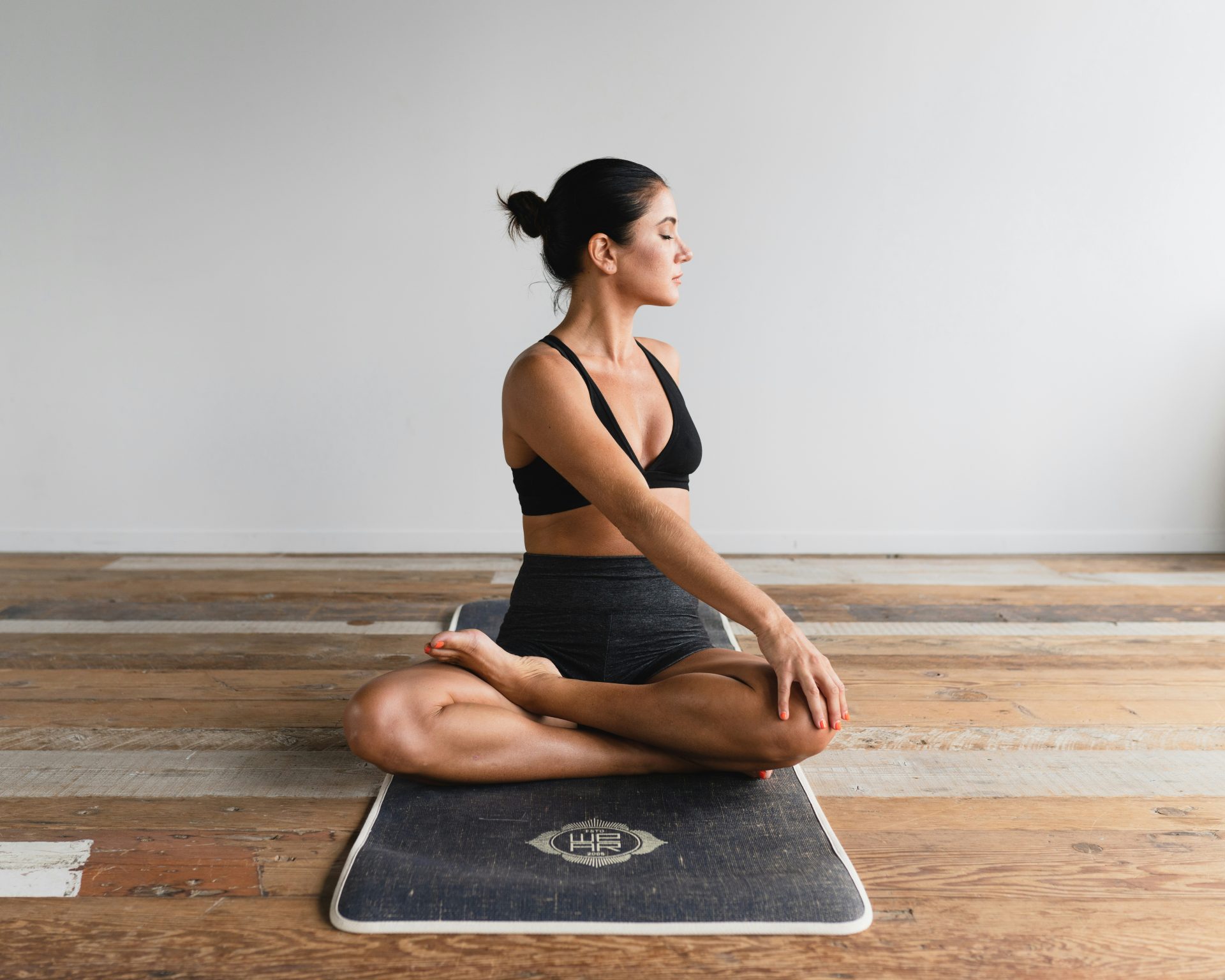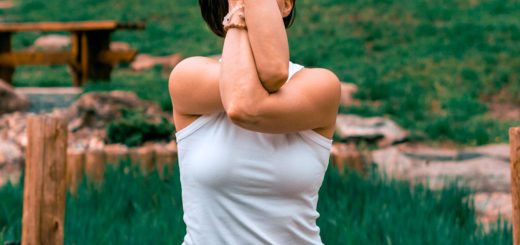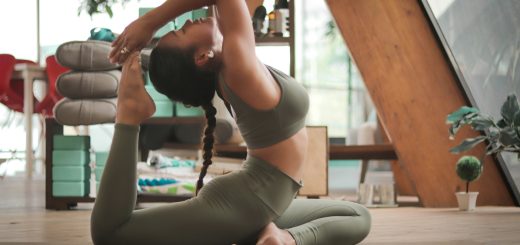Vinyasa: Flow Yoga for Dynamic Movement

Before diving in, please note: This post is for informational purposes only. If you’d like to know more about how we approach topics, feel free to check out our friendly Disclaimer Page.
Hey there, amazing readers! 🖐️ Just a quick note: yes, we know there are a lot of ads here. Trust us, we get it—it’s not the prettiest look, but they help us keep this blog alive and kicking. Those pesky little ads cover the costs of all the behind-the-scenes magic, from hosting and tech stuff to creating content we hope you’ll love.
We’re committed to delivering quality posts, and your support (even just sticking around despite the ads) means everything to us. So, bear with us, and thanks for helping us keep the good vibes rolling. Now, on to the fun stuff! 😉
TRANSLATE BUTTON AT THE END OF THE ARTICLE
Introduction to Vinyasa Yoga
Vinyasa yoga, sometimes referred to as "flow yoga," is a dynamic and fluid style of yoga practice that seamlessly links breath with movement.
The word "vinyasa" itself translates to "connection" in Sanskrit, emphasizing the importance of the connection between breath and movement in this practice.
Unlike more static forms of yoga, vinyasa involves a series of poses that flow together in a continuous, rhythmic manner.
This style of yoga is both physically challenging and mentally stimulating, making it a popular choice for those looking to build strength, flexibility, and mindfulness in their practice.
Benefits of Vinyasa Practice
There are numerous benefits to practicing vinyasa yoga on a regular basis.
One of the key advantages is the ability to build strength and flexibility throughout the entire body.
The flowing nature of vinyasa sequences helps to engage different muscle groups, leading to improved overall muscle tone and endurance.
Additionally, vinyasa yoga can help to increase cardiovascular fitness and promote weight loss through its dynamic movements and continuous flow.
Beyond the physical benefits, vinyasa practice can also help to reduce stress and anxiety, improve focus and concentration, and promote a sense of overall well-being.
Understanding Flow Movement
Flow movement in vinyasa yoga involves smoothly transitioning from one pose to the next, creating a seamless and continuous sequence.
This fluid movement helps to create a sense of rhythm and grace in the practice, allowing practitioners to move with intention and mindfulness.
By linking breath with movement, flow yoga becomes a moving meditation that encourages practitioners to stay present and focused throughout their practice.
The continuous nature of flow movement also helps to build heat in the body, increasing flexibility and promoting detoxification through sweat.
Key Principles of Vinyasa
There are several key principles that underpin the practice of vinyasa yoga.
One of the most important principles is the synchronization of breath with movement, known as "pranayama." Practitioners are encouraged to match each inhale and exhale with a specific movement, creating a sense of fluidity and connection throughout the practice.
Another key principle is the concept of "vinyasa krama," which refers to the intelligent sequencing of poses to create a balanced and harmonious practice.
This principle ensures that each pose flows naturally into the next, building on the previous one to create a cohesive and effective sequence.
Breathwork in Vinyasa Yoga
Breathwork is a central component of vinyasa yoga, with a strong emphasis on conscious and controlled breathing throughout the practice.
The breath acts as a guide for movement, helping practitioners to deepen their poses and maintain focus and presence on the mat.
In vinyasa yoga, the breath is often used to create heat in the body, allowing practitioners to release tension and toxins through controlled exhalations.
By cultivating awareness of the breath, practitioners can tap into the calming and energizing effects of pranayama, enhancing both the physical and mental aspects of their practice.
Sequencing and Poses
Vinyasa yoga sequences are carefully curated to flow smoothly from one pose to the next, creating a dynamic and engaging practice.
Sequences often follow a "peak pose," which is a more challenging pose that serves as the focal point of the sequence.
Practitioners work towards building the strength and flexibility necessary to achieve the peak pose, progressing through a series of preparatory poses along the way.
Common poses in vinyasa yoga include downward-facing dog, plank, chaturanga, warrior poses, and various backbends and inversions.
These poses are typically linked together in a continuous flow, creating a moving meditation on the mat.
Modifications for All Levels
Vinyasa yoga can be tailored to suit practitioners of all levels, from beginners to advanced yogis.
Teachers often offer modifications and variations for poses to accommodate different levels of strength and flexibility.
Beginners may choose to take a more gentle approach to vinyasa, focusing on building foundational poses and exploring the basics of flow movement.
Advanced practitioners, on the other hand, may challenge themselves with more complex sequences and advanced poses.
Regardless of experience level, vinyasa yoga can be adapted to meet the needs and abilities of each individual practitioner.
Building Strength and Flexibility
One of the key benefits of vinyasa yoga is its ability to build both strength and flexibility in the body.
The dynamic nature of vinyasa sequences helps to engage different muscle groups, leading to increased muscle tone and endurance.
Through consistent practice, practitioners can develop greater flexibility in the muscles and joints, improving overall range of motion and reducing the risk of injury.
Poses in vinyasa yoga often target specific areas of the body, such as the core, arms, legs, and back, helping to build strength and stability throughout the entire body.
Finding Balance in Flow
Finding balance in vinyasa yoga involves both physical and mental components.
On a physical level, balance poses such as tree pose, eagle pose, and half moon pose help to improve coordination and stability in the body.
These poses require focus and concentration to maintain balance, encouraging practitioners to stay present and centered in their practice.
On a mental level, vinyasa yoga helps to cultivate a sense of inner balance and harmony through breath awareness and mindfulness.
By finding balance in both body and mind, practitioners can experience a greater sense of well-being and equanimity in their practice.
Flowing Meditation in Practice
Vinyasa yoga offers a unique opportunity to cultivate a moving meditation on the mat.
By linking breath with movement and flowing through sequences with intention and awareness, practitioners can achieve a state of mindfulness and focus during their practice.
The rhythmic nature of vinyasa sequences helps to quiet the mind and center the body, creating a sense of peace and tranquility on the mat.
Practitioners are encouraged to let go of distractions and external thoughts, allowing themselves to be fully present in each breath and movement.
This flowing meditation can have profound effects on both the body and mind, promoting relaxation, clarity, and inner peace.
Common Misconceptions
Despite its many benefits, vinyasa yoga is sometimes misunderstood by those who are unfamiliar with the practice.
One common misconception is that vinyasa yoga is only suitable for experienced yogis or those with a high level of fitness.
In reality, vinyasa can be modified to suit practitioners of all levels, from beginners to advanced.
Another misconception is that vinyasa yoga is purely a physical practice, focusing only on building strength and flexibility.
While vinyasa does offer physical benefits, it also promotes mental well-being through breathwork, mindfulness, and meditation.
By dispelling these misconceptions, more people can experience the transformative power of vinyasa yoga in their own practice.
Final Thoughts on Vinyasa Yoga
In conclusion, vinyasa yoga offers a dynamic and engaging practice that can benefit practitioners of all levels.
By linking breath with movement, flowing through sequences with intention and mindfulness, and cultivating a sense of balance and harmony, vinyasa yoga provides a holistic approach to health and well-being.
Whether you are looking to build strength and flexibility, reduce stress and anxiety, or deepen your connection to yourself and others, vinyasa yoga offers a pathway towards greater self-awareness and transformation.
So roll out your mat, take a deep breath, and flow through the movements with grace and intention – the journey of vinyasa yoga awaits.

The Enlightenment Journey is a remarkable collection of writings authored by a distinguished group of experts in the fields of spirituality, new age, and esoteric knowledge.
This anthology features a diverse assembly of well-experienced authors who bring their profound insights and credible perspectives to the forefront.
Each contributor possesses a wealth of knowledge and wisdom, making them authorities in their respective domains.
Together, they offer readers a transformative journey into the realms of spiritual growth, self-discovery, and esoteric enlightenment.
The Enlightenment Journey is a testament to the collective expertise of these luminaries, providing readers with a rich tapestry of ideas and information to illuminate their spiritual path.
Our Diverse Expertise 🌟
While our primary focus is on spirituality and esotericism, we are equally passionate about exploring a wide range of other topics and niches 🌍📚. Our experienced team is dedicated to delivering high-quality, informative content across various subjects ✨.
To ensure we provide the most accurate and valuable insights, we collaborate with trusted experts in their respective domains 🧑🏫👩🏫. This allows us to offer well-rounded perspectives and knowledge to our readers.
Our blog originally focused on spirituality and metaphysics, but we’ve since expanded to cover a wide range of niches. Don’t worry—we continue to publish a lot of articles on spirituality! Frequently visit our blog to explore our diverse content and stay tuned for more insightful reads.






